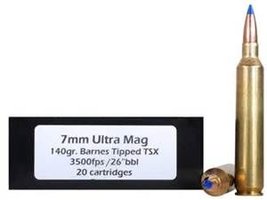I got the following question on my website, and I'm stumped, so I figured I'd post it here and see if anybody has some insight. Keep in mind that this is not my rifle, so I can't answer anything beyond what's indicated here, but the guy seems to know what he's talking about, so I'm inclined to take him at his word:
ETA: I can think of a couple of possible causes:
1. The "super cleaning" removed residue in the shoulder area of the chamber and it's not excessive pressure but excessive headspace that's causing the "pressure signs". If this is the case, there will be a difference in the case head-to-shoulder measurement of his reloads before and after firing.
2. The bore is rough, and the super cleaning exposed some roughness that's now interfering with the bullet as it travels down the barrel. If this is the case, his pressure signs will go away after 50 or so rounds.
I have a Rem 700 in 7mm RUM; been using the same load for about three years(same powder, same primer, same bullets, same make brass...everything is the same).
I clean my rifle regularly but recently I "Super cleaned" it removing all copper and anything in the barrel. Now I am getting some extreme pressure signs that I never had before i.e. blowing primers, cratering and flattening the head stamps out.
There have been three changes to the way I do my handloads in the last three years, now have a sonic cleaner, use a bronze brush on the inside of the neck and the super cleaning of the rifle.
I do not understand why all of a sudden I am seeing this pressure. load is : 7mm RUM, 150 gr Swift Scirocco II, 102.6 gr of US 869 powder with Federal 215M primers. Currently shooting below 1/2 MOA with this load.
Any thoughts would be grateful!
ETA: I can think of a couple of possible causes:
1. The "super cleaning" removed residue in the shoulder area of the chamber and it's not excessive pressure but excessive headspace that's causing the "pressure signs". If this is the case, there will be a difference in the case head-to-shoulder measurement of his reloads before and after firing.
2. The bore is rough, and the super cleaning exposed some roughness that's now interfering with the bullet as it travels down the barrel. If this is the case, his pressure signs will go away after 50 or so rounds.
Last edited:


![Wink [wink] [wink]](/xen/styles/default/xenforo/smilies.vb/002.gif)